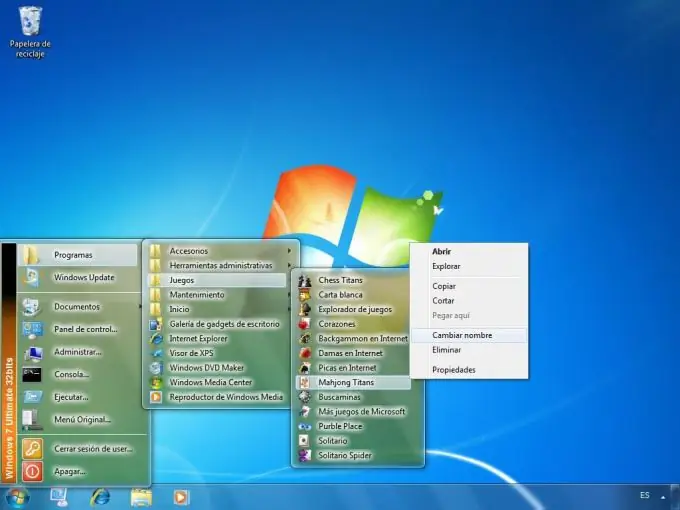The Windows operating system provides the user with a fairly large number of options for changing the appearance of the Start menu. If necessary, it is also possible to edit the menu display parameters using the registry editor.

Necessary
Windows XP
Instructions
Step 1
Call the service menu by right-clicking on the "Start" menu field and go to the "Properties" item.
Step 2
Select the Skin section in the window that opens and select the desired theme - "Classic View" or "Standard View".
Step 3
Click the "Customize" button next to the selected theme and go to the "General" tab.
Step 4
Select the desired size for program shortcuts in the "Resize icons" section.
Step 5
Specify the desired number of program shortcuts placed in the list. Clear the list completely (if necessary) by clicking the "Clear list" button.
Step 6
Call the drop-down menu by right-clicking on the "Internet" or "E-mail" field in the "Internet and E-mail" section.
Step 7
Specify the desired browser (in the "Internet" field) or mail client; in the "E-mail" field) to select the programs displayed in the "Start" menu.
Step 8
Click the Advanced tab and select the Start Menu Options.
Step 9
Apply the checkbox to the "Highlight recently installed programs" box and go to the "Start Menu Items" section.
Step 10
Specify the desired options for displaying the items "Administration", "Select programs by default", "Run", menu "Favorites", etc.
Step 11
Choose how your My Documents, My Pictures, My Computer, My Music, and Control Panel folders are displayed from the suggested ones.
Step 12
Apply the same procedure to the rest of the Advanced tab sections and click OK to run the command. Advanced users can use Registry Editor to get the desired result.
Step 13
Create parameter binary or dword in key
HKEY_CURRENT_USERSoftwareMicrosoftWindowsCurrentVersionExplorerAdvanced
and enter the values into the appropriate fields:
Start_ AutoCascade
Start 1 - for automatic opening of the menu or 0 - for opening the menu after a mouse click
Start_ScrollPrograms 1 - to use menu scrolling or 0 - not to use
Start_EnableDragDrop 1 - to allow dragging objects using the mouse or 0 - to disable
Start_NotifyNewApps 1 - to highlight recently installed programs or 0 - to use mouse click when expanding the menu
Start_LargeMFUIcons 1 - to display small icons or 0 - to use large program shortcuts.






